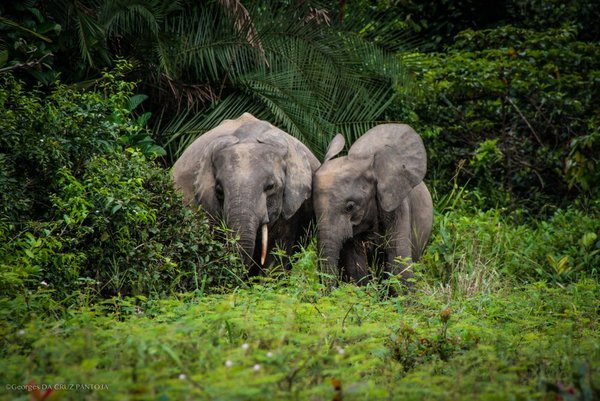 Read this article in French
Read this article in French- Share this article
- Subscribe to our newsletter
Defaunation needs more attention
Loss of fauna in tropical forests impedes achieving the Sustainable Development Goals (SDGs), researchers warn in late April 2021. A new publication from scientists at the Lund University Centre for Sustainability Studies (LUCSUS) in Sweden and the Leibniz Institute for Zoo and Wildlife Research (Leibniz-IZW) in Germany explores the links between defaunation of tropical forests and the United Nations Sustainable Development Goals (SDGs).
Defaunation is a quiet process currently unfolding in tropical forests. It refers not only to the loss of animal species diversity owing to regional or global extinctions, but also includes the circumstance that species are much less abundant and cannot fulfil their ecological roles when their numbers are small. Defaunation threatens critical ecological functions and jeopardises human well-being at different levels.
SDGs markedly affected by defaunation:
- Nutrition and zero hunger (SDG 2): Wild meat is an important source of nutrition for local people who live within or in close proximity to tropical forests and who depend on it for sustenance. Defaunation increases hunger, reduces access to safe, nutritious and sufficient food throughout the year and enhances malnutrition of children. As tropical forests’ animals play a key role in pollination, loss of insects, bats or birds can also threaten the yield of non-timber forest products such as fruits or nut-bearing trees – another pillar of food security and health in the tropics.
- Good health and well-being (SDG 3): The past 18 months have shown that wild meat consumption can be of global public health importance, because wild animals are hosts of and can transmit numerous, potentially fatal zoonotic diseases. Besides this, a rich and resilient forest fauna is often of great cultural significance and serves as a source of inspiration in art and literature –contributing to achieving goal 3.4 “to promote mental health and well-being” under SDG 3.
- Climate action (SDG 13): Forests are one of the world’s most important terrestrial carbon sinks. Maintaining and protecting healthy forest ecosystems is critical to mitigating climate change. Intact faunal communities play a crucial role in maintaining such forest ecosystem functions because of the multitude of ecological interactions between plants and animals. Recent investigations have demonstrated the direct link of faunal diversity to carbon storage capacity: When large-seeded, animal-dispersed trees decline, forests store less carbon.
- Life on land (SDG 15): The loss of fauna from the world’s tropical forests is directly linked to our future ability to protect and sustainably use terrestrial forest ecosystems and their biodiversity. Defaunation, therefore, is a direct threat to the targets within SDG 15, for example target 15.2 (by 2020, promote the implementation of sustainable management of all types of forests, halt deforestation, restore degraded forests and substantially increase afforestation and reforestation globally) and target 15.5 (take urgent and significant action to reduce the degradation of natural habitats, halt the loss of biodiversity and, by 2020, protect and prevent the extinction of threatened species).
Defaunation needs to be given more attention in various areas of research, the researchers urge. The consequences of tropical defaunation being far-reaching, but uniquely complex – as the wild meat dilemma illustrates –, more interdisciplinary research is needed to fully understand the implications of the process. Holistic and location-based conservation approaches need to be designed in order to mitigate and reverse defaunation. Local socio-economic systems have to play an important role for the success of conservation strategies.
Defaunation has also been largely overlooked in forest conservation policies and needs to be directly addressed in forest governance strategies, stimulated, for example, by including fauna in forest-focused global climate finance. Last but not least, researchers emphasise that effective action to curb and control the commercial trade of tropical wildlife is a major cornerstone in tackling defaunation of forest ecosystems.
(IZW/ile)
Read more at IZW website
Publication:
Krause T, Tilker A (2021): How the loss of forest fauna undermines the achievement of the SDGs. Ambio. DOI: 10.1007/s13280-021-01547-5





Add a comment
Be the First to Comment